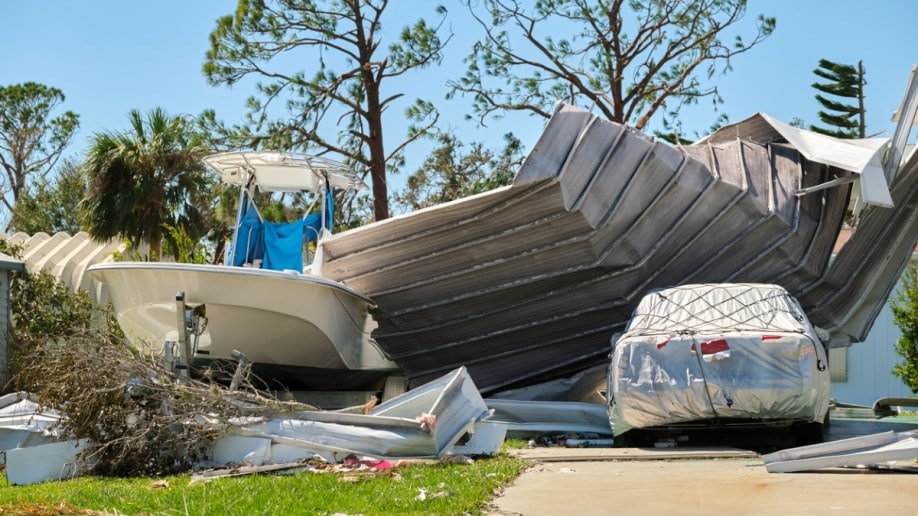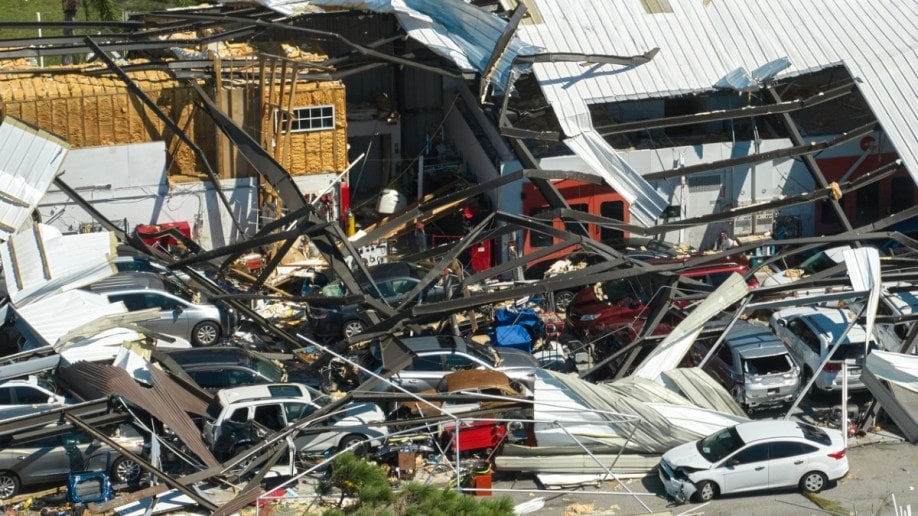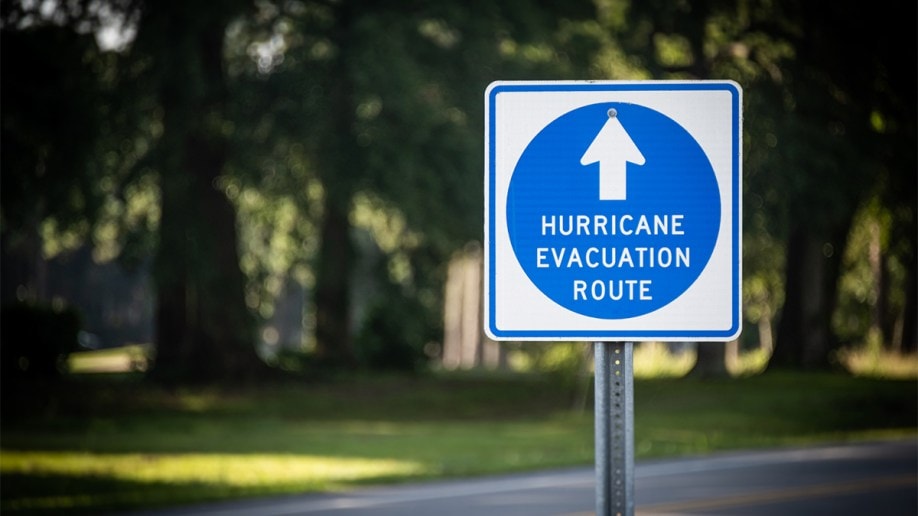Quick Facts About Prepping Your Vehicle for a Hurricane
- Getting ahead of scheduled service and maintenance should be part of your emergency preparedness plan.
- If you don’t have a garage, storage options include car covers, cushioned protection, and strategic parking.
- Keep your fuel tank full, evacuate early, and stock your car with a hurricane-specific emergency kit.
The National Oceanic and Atmospheric Administration climate experts predict an 85% chance of above-normal Atlantic hurricane activity through November 1. With already major impacts from Hurricane Helene and Tropical Storm Leslie, NOAA forecasts between 17 and 25 named storms. The agency predicts eight to 13 to become hurricanes this season, with winds of 74 mph or higher. Of those, four to seven could develop into major hurricanes with winds of 111 mph or higher. An average Atlantic storm season produces 14 named storms, seven of them hurricanes and three major hurricanes.
The increased likelihood of severe weather this year with dangerous wind and destructive flooding means car owners in coastal regions and inland locations must remember to take proactive steps to protect their automobiles ahead of landfall.
Hurricanes and tropical storms can cause extensive damage to homes, businesses, and vehicles. If you live near the coast, you may already have emergency preparedness plans for your family and house, but is your car ready? While protecting your home is always a high priority, there are also ways to prep and safeguard your vehicle before the storm hits. Check out our comprehensive guide for advice on preparing your car for a hurricane. These tips and safety reminders are relevant whether you plan to hunker down at home or evacuate from the path of a dangerous storm.
TIP: Download a PDF of this guide to have on hand and share with others.
Hurricane Season Car Maintenance
Being on top of auto maintenance is essential ahead of hurricane season. Have a professional inspect your vehicle and perform scheduled maintenance before the season begins and storms approach. Service your car now to be ready for driving long distances or idling for extended periods, which is not unusual during a storm evacuation. If time permits, schedule a tune-up. Meanwhile, enter your VIN into Kelley Blue Book’s Service Advisor tool to review and address common problems before they happen. Here are other things you should check:
- Battery: Use a multimeter to test the health of your car’s battery. Or, take it to your local auto shop for a battery health assessment. A strong battery is essential when it’s time to pack up and go without needing a jump-start.
- Tires: Check the condition of your tires. Are they worn, or do they have adequate tread remaining? Rotate or replace tires now before a storm comes. Also, consider a fresh alignment to help with even wear. Don’t put these tasks off. Your vehicle is useless for evacuation or recovery efforts if damaged tires prevent you from driving. Consider buying a battery-powered portable air compressor to ensure your tires are properly inflated. Well-inflated tires are more stable in tricky road conditions. Some devices have jumper cables and USB ports for charging electronics, which are handy beyond tire maintenance.
- Spare Tire: Resist the temptation to remove your spare tire to make more room for trunk storage. With unpredictable road conditions after a severe storm, you’re more likely to drive over rough debris. Having a spare tire and less storage space is better than being stranded.
- Air Conditioning System: Hurricanes bring strong winds and heavy rain, and the heat and humidity often remain after the storm passes. Ensure your car’s air conditioning system works so longer drives are comfortable.
- Wipers: Clear visibility is crucial for safe driving in heavy rain. Minimize smears, streaks, and blurry spots on your windshield with a new set of wipers.
- Overheating Concerns: Engine overheating is more common when cars idle in evacuation bottlenecks. Have your car’s cooling system checked, including the radiator, fan belt, thermostat, water pump, and coolant levels.
- Recalls: Check for recalls for your vehicle ahead of an evacuation and address critical concerns and safety issues as soon as possible.
Preparing Your Car for Hurricane When Staying Home
Torrential rain. Sustained wind. Violent gusts. Storm surges. Unwelcome hurricane traits are common, but the destruction is unpredictable. Some damage may be unavoidable, and preparation is essential for minimizing harm. If you plan to stay home and weather the storm, take some steps to help protect your vehicle.
Garage Storage
If you have a garage, the best way to protect your car is to park inside and fully close the door. Once your vehicle is safely parked inside, here are some other tips:
- Cover the windows. If your garage has exterior windows or secondary doors that lead outside, board them up the same way you’d batten down the windows in your home.
- Cover your car. Use a padded car cover as a layer of protection for the exterior. Alternatively, you can put thick blankets or rugs on the vehicle to prevent damage from flying debris.
- Pull further inside. Put some distance between the garage door and the back of the vehicle to prevent it from hitting the car if violent wind or debris push the door inward.
- Secure loose items. Tie down or barricade loose items inside the garage so they don’t get knocked around or crash into the car during the storm.
RELATED: Car Lift: Ways to Protect Your Car From a Flood
Outdoor Storage


If you don’t have a garage or can’t park your car in a covered area, there are still ways to prepare:
- Strategic parking: Park your car on the highest ground possible. If no elevated areas are nearby, position the car along the side of a sturdy structure to help shield the vehicle from wind and projectiles.
- Cover your car: Use a heavy-duty car cover larger than the vehicle to protect it from the elements.
- Soften any blows: Put seat cushions from patio furniture inside a car cover to further buffer the exterior. Securing inflatable rafts underneath the cover may help cushion the impact of flying debris and minimize denting.
- Secure Loose Objects: Bring things like inflatables, rafts, lawn furniture, bird feeders, garden decor, etc., inside your home so they’re not flying near your car when the wind kicks up.
Electric Vehicle Considerations
If you own an electric car, some additional considerations must be remembered.
- Charge: Ensure your battery is fully charged before the rains roll in. If your area loses power, it may be a while — perhaps days — before you can recharge.
- Disconnect: Once your EV is fully charged, disconnect the charging cable from the port. Do not leave it plugged in during the storm to avoid possible damage from a power surge or lightning strike.
- Lift: Consider elevating the car in case of flooding. If you have a car lift or ramp, keep the vehicle off the ground and protect its battery pack from corrosive seawater.
Preparing Your Car for a Hurricane Evacuation
If you evacuate from the region before a hurricane, ensure your vehicle is in good condition and ready to drive the distance. You can help avoid being stranded on the road by handling any repairs and critical safety concerns before planning your departure. Always prioritize your safety and follow all guidance and directions from your local authorities.
Car Emergency Kit Checklist for Hurricanes
Every car owner needs a well-stocked emergency kit. Here are some items to include when prepping for a hurricane.
- Basic tool kit
- Blankets
- Breaker bar
- Cleaning wipes
- Disinfectant spray
- Duct tape
- Emergency cash
- Fire extinguisher
- First aid kit
- Flashlight
- Flat tire emergency repair kit
- Funnel
- Hand sanitizer
- Heavy-duty gloves
- Medications and supplements
- Microfiber cloths
- Non-perishable food and snacks
- Paper maps
- Phone charger
- Portable power bank
- Rain poncho
- Resealable plastic bags
- Skin salve
- Sleeping bag
- Toilet paper and personal hygiene items
- Vehicle registration and insurance information
- Water
- Whistle
Plan Ahead and Drive Carefully to Get the Most From Your Car
An accident will stop your progress (and the thousands of others behind you), so pay attention during the stop-and-go string of cars leaving the region. When driving during a hurricane evacuation, do your best to conserve fuel and use your vehicle’s resources efficiently. Here are some things you can do to get the most out of your car:
- Refuel before the hurricane hits. Be prepared for long lines at gas and charging stations along the evacuation route.
- Evacuate early. The longer you wait, the more likely you’ll get caught in traffic.
- Choose the best car for the journey. If you have multiple vehicles, leave one stored at home, and evacuate in the most reliable of your transportation options.
- Share the load. If you’ve got a long drive ahead, take turns with a partner or family member.
- Make a plan. Plan your stops ahead of time but be patient when plans change. Careful planning is essential for electric car drivers. Be aware of charging station locations on the route and take advantage of them when feasible.
- Pay attention to your fuel economy. Stay mindful of your driving range to your destination.
- Use the air conditioner when you’re driving. Staying comfortable can help you remain calm during a stressful evacuation.
- Take rest stops as a solo traveler. If you’re driving alone, consider stopping to rest when you’re out of the danger zone. Continue your journey when you’re ready.
What to Do If Your Car Breaks Down Out of State?
Call your insurance company if your car breaks down in another city or state. Your policy may include towing and roadside assistance, in which case the towing company will haul it to a local shop for repairs. Prepare yourself for a long wait. If you don’t have towing coverage, ask your insurance company for a list of trusted repair shops in the area. They should still be able to point you in the right direction.
Does Car Insurance Cover Flood Damage?
If your policy includes comprehensive coverage, it may help cover the costs of flood damage. Contact your insurance agent to confirm these details.
Vehicle Preparation for Hurricanes


Hurricane season can be stressful for those who may feel a storm’s impact. You can prepare your vehicle for dangerous weather, which helps ensure it remains in good shape when the sky clears. It’s always better to be safe than sorry, so take the time to prepare your vehicle before a hurricane strikes.
Read More About Cars and Weather:
Editor’s Note: This article has been updated since its initial publication. Chantel Wakefield contributed to the report.


